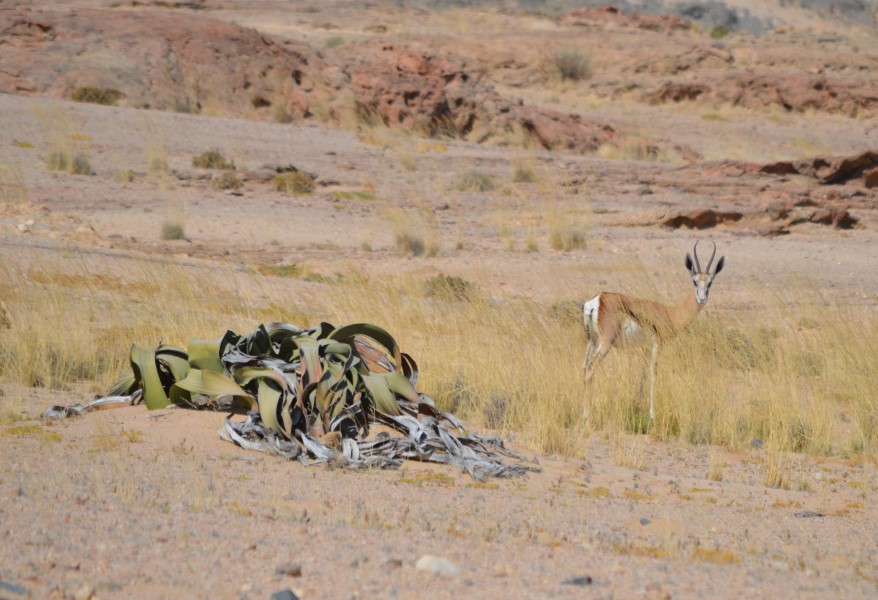The Moon Landscape and Welwitschia Tour was one of the highlights of my stay in Swakopmund, Namibia. I was really enjoying the unique environment presented by the Namib Desert and could not wait to venture out again.
Guided Moon Landscape and Welwitschia Tours are available from local guides, however, self drive safari is the theme of my travel blog. As a result, I did the self drive and my website visitors can review my plans and photos below. But first, here is an amusing anecdote about Swakopmund, Angelina Jolie and the welwitschia plant.
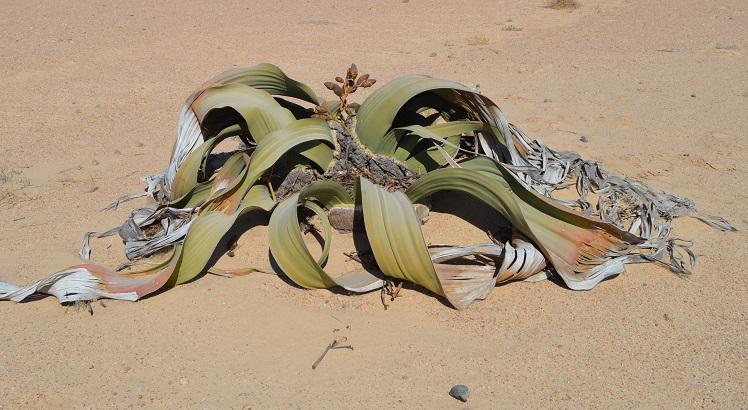
The Story of the Welwitschia and Angelina
The Moon Landscape and Welwitschia Tour starts in Swakopmund. Therefore, when you are making your way around Swakopmund, Namibia a street named after the welwitschia is sure to get your attention.
Therefore, the first thing that comes to mind is – what the heck is a welwitschia? Indeed, the welwitschia plant may be the best thing that ever happened to Swakopmund, even better that Angelina Jolie giving birth to one of her kids there in 2006.
It is most certain you will not encounter Mrs. Jolie on the Moon Landscape and Welwitschia Tour. However, the welwitschia and Mrs. Jolie really do have a few things in common:
- Weirdness. Angelina Jolie is weird, I mean really weird. In comparison, the welwitschia plant only looks weird to the untrained eye. To a botanist, the welwitschia plant is the most beautiful creature on earth! The botanist, Frederick Welwitsch discovered the welwitschia plant in 1859. Indeed, he was so overwhelmed by the sight of the welwitschia, that he “could do nothing but kneel down and gaze at it, half in fear lest a touch should prove it to be a figment of the imagination”. I guess everyone has their own Brad Pitt!
- Ignorance I was previously ignorant about both Angelina Jolie and the welwitschia plant until I visited Swakopmund. Additionally, I did not know about Angelina giving birth in Swakopmund. Nor would I have learned about this lovely plant had I never visited this fair city!
- Desert childbirth. Both Angelina and the welwitschia give birth in the desert! That’s right, there are male and female welwitschia plants. You can tell them apart by their cones, see more below.
The Welwitschia Knows Best
These cool attributes that they share are very interesting. However, the venerable welwitschia plant is still more interesting, more sane and more appreciated in Swakopmund. After all, the locals still have not named a street after Angelina Jolie in their town. In the end, the welwitschia will see many, many pop stars come and go in a single life time.
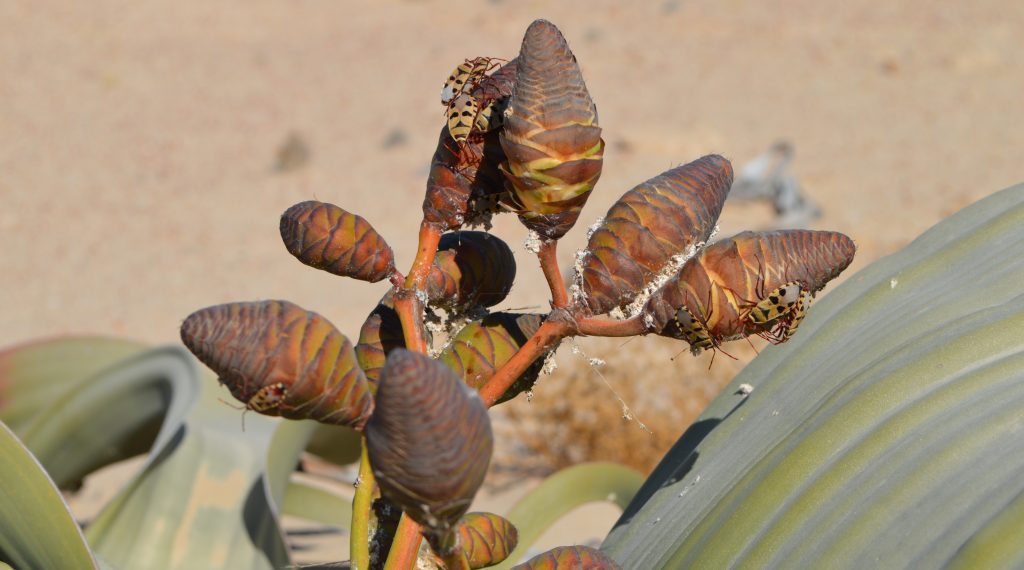
The Welwitschia Plain is located in the desert landscape surrounding Swakopmund. Indeed, the Welwitschia Plain is a good day trip all on its own. However, it is more practical to combine the Moon Landscape and Welwitschia Tour. Both destinations are located conveniently close to each other. Additionally, it is more efficient to see both in one day, rather than to returning to Swakopmund first. Plus, I found that a few hours of each in one day was plenty of time to enjoy them both.
I am going to save the best for last and cover the Moon Landscape first. If you are more interested in the Welwitschia Plain, then you can skip ahead a few paragraphs to that section.
Moon Landscape and Welwitschia Tour Plans and Preparations
From Swakopmund take B2 going east, then take a right onto C28. Then you need to find your own way, but I found it to be rather simple. You are going to need a Namib Naukluft National Park permit. This is because the Moon Landscape and Welwitschia Tour lies inside the northern boundaries of the park. Permits are available for a nominal fee at the Ministry of Environment and Tourism Office in Swakopmund.
Bring a local map with you and you can also get some good info from the locals before you head out. **Hint – they should have a good basic map of the drive and additional info at the tourism office.
Heavy coastal fog frequently covers Swakopmund in the morning. However, this is not cause for concern because it always burns off before noon. Indeed, watching the fog dissipate over the Namib Desert during your Moon Landscape and Welwitschia Tour can be a rewarding experience.
This fog is crucial for the survival of many desert species of plant and animal. Without it they would not have any other source of water. It only takes a little bit to keep them alive and the fog is all that they need.
Geology of the Moon Landscape
The Moon Landscape was created from prolific geological processes that occurred about 500 million years ago when the Gondwana Continent crashed together. Over millions of years, the process of erosion leveled the granite mountains down to their roots. As a result, this granite mountain range transformed into badlands topography called the Moon Landscape.
The Swakop River played a major role in the erosion of the Moon Landscape over 2 million years. Additionally, the erosion was exacerbated by strong winds and extreme heat. As a result, it was easier for the water to sweep away the mineral fragments.
Ironically, it is not the water that imposes the strongest force of erosion onto the granite. Instead, it is the heat and wind that cause the granite to break down more efficiently. If it were not for the combined forces of wind, water and heat then the Moon Landscape would not be so geologically profound as it is today.

Moon Landscape View Points
The drive is very open and it provides a good overview of the Namib Desert Scenery. Additionally, there are several view points overlooking the Moon Landscape and it is a great area for photography. It is also possible to do some exploring and there are a few bunny trail roads leading into the badlands. I did see signs of human life, but it appeared that the camps had been closed down for some reason.
This section of the Moon Landscape and Welwitschia Tour was now concluded. Therefore, it was now time to drive over and visit the Welwitschia Plain which is not too far away.
The Welwitschia Plain
This plant is a living fossil and it can live for up to 2000 years. As a result, if paleontologists had a favorite plant, it would be the welwitschia. Furthermore, the welwitschia is endemic to the Southern Angola and Namibia. The plant’s habitat hugs the Atlantic Coastline from Southern Angola all the way down to the Kuiseb Canyon in Central Western Namibia. Additionally, it’s habitat stretches from the Atlantic coastline to about 100 km inland.

Biology of the Welwitschia
The Welwitschia has 2 leaves, a stem base and roots. It’s 2 leaves continue to grow throughout it’s life, eventually the leaf ends begin to split and whither. The plant stem height is up to about 1.8 meters maximum and the maximum radius that the 2 leaves can grow around the stem base is about 8 meters.
However, the plants I saw in this area seemed to have a smaller visible radius than this. Although what is beneath the sand may be much larger. As a result, visitors must respect the area around the plant and do not walk up too close to it. Especially if it is marked with a stone radius. They take a long time to grow back!
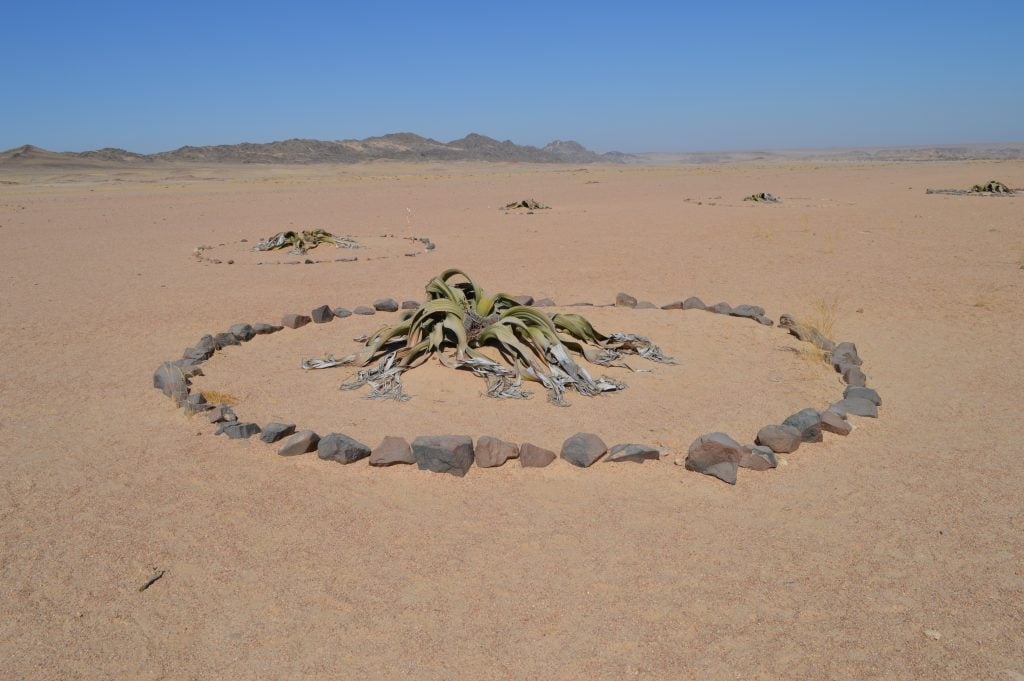
Moon Landscape and Welwitschia Tour Conclusion
I found the Moon Landscape and Welwitschia Tour to be very worthwhile. The plant itself was not terribly exciting. However, Namib Desert landscape and the wildlife were fantastic. As a result, photo opportunities are abundantly available.
An additional benefit is that I would soon be driving back over to Windhoek to meet my friend. I would be going over the Bosua Pass. The C28 road routes directly over the Bosua Pass, taking travelers straight into Windhoek. As a result, doing the Moon landscape and Welwitschia Tour gave me a really good preliminary look at what I could expect for my future drive. Lots of open road and desert scenery for sure!
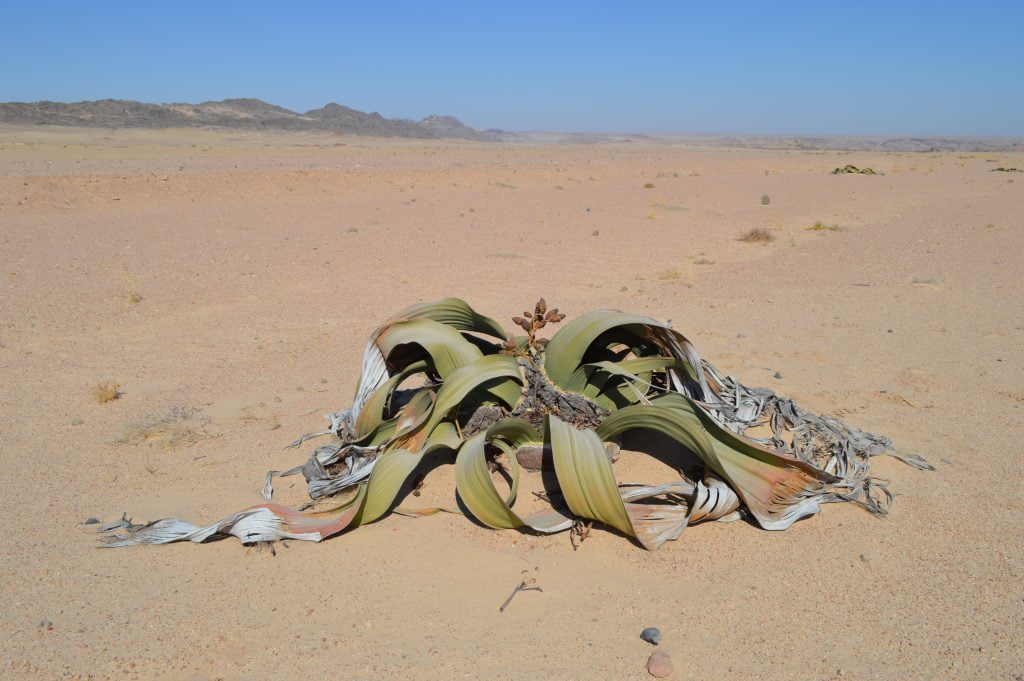

Helpful Resources:
Namibia – Fascination of Geology
A Travel Handbook
Nicole Grunert

